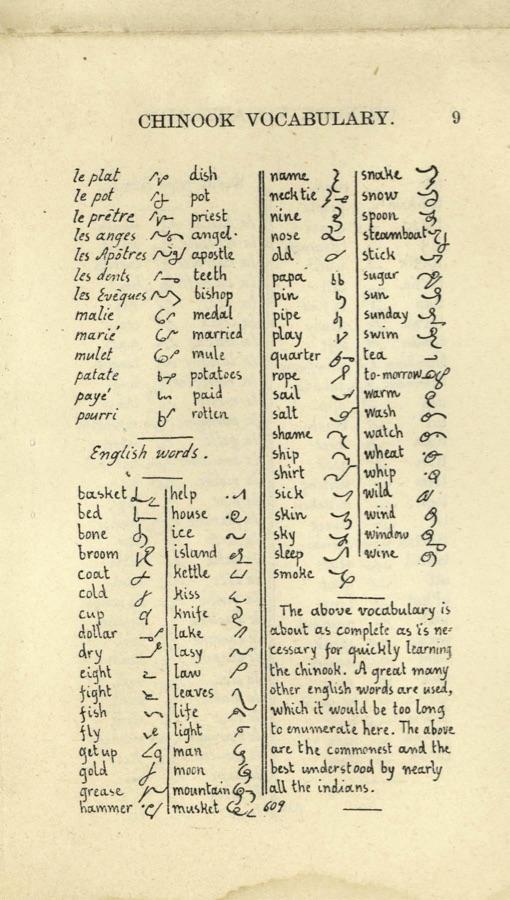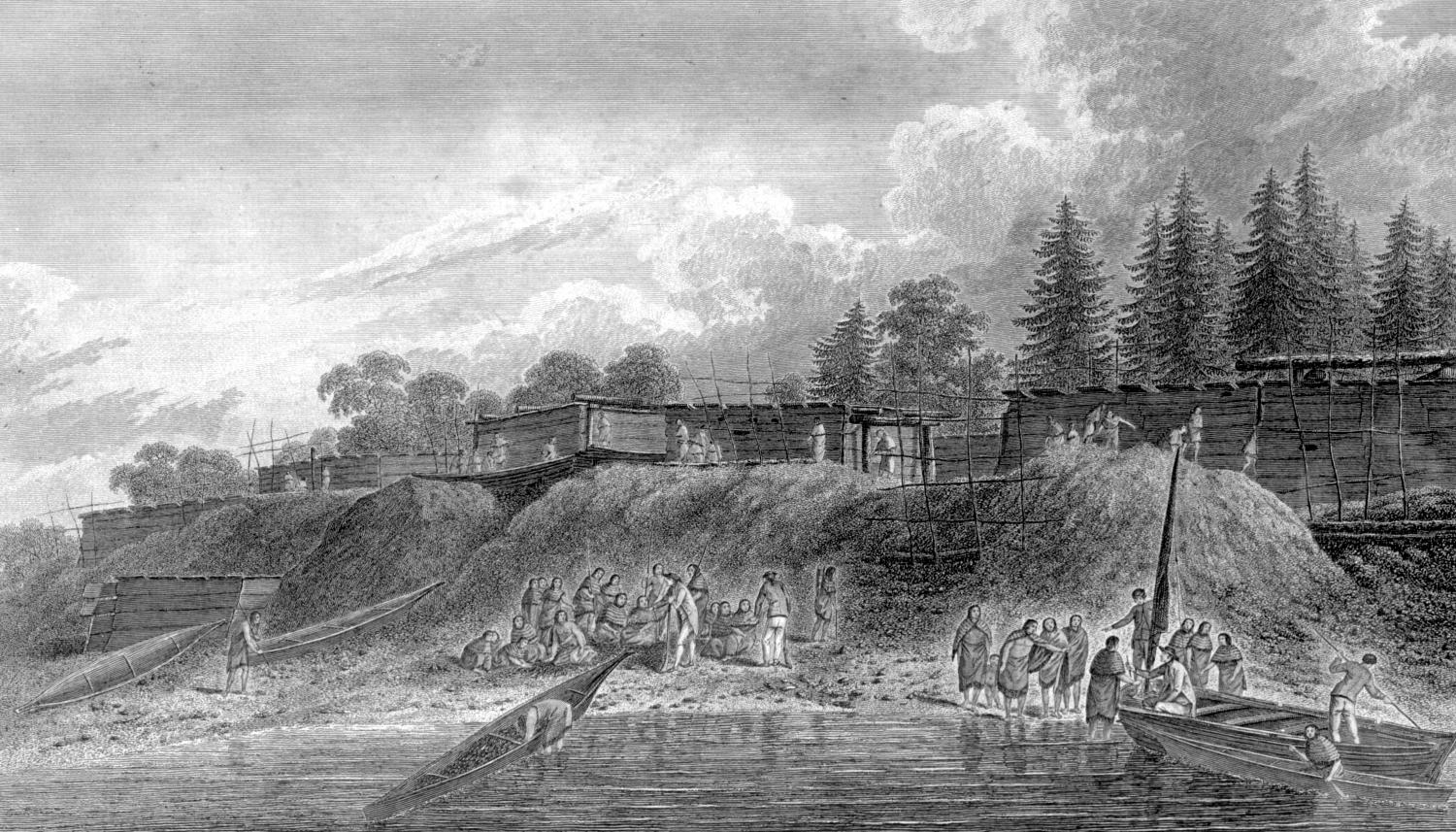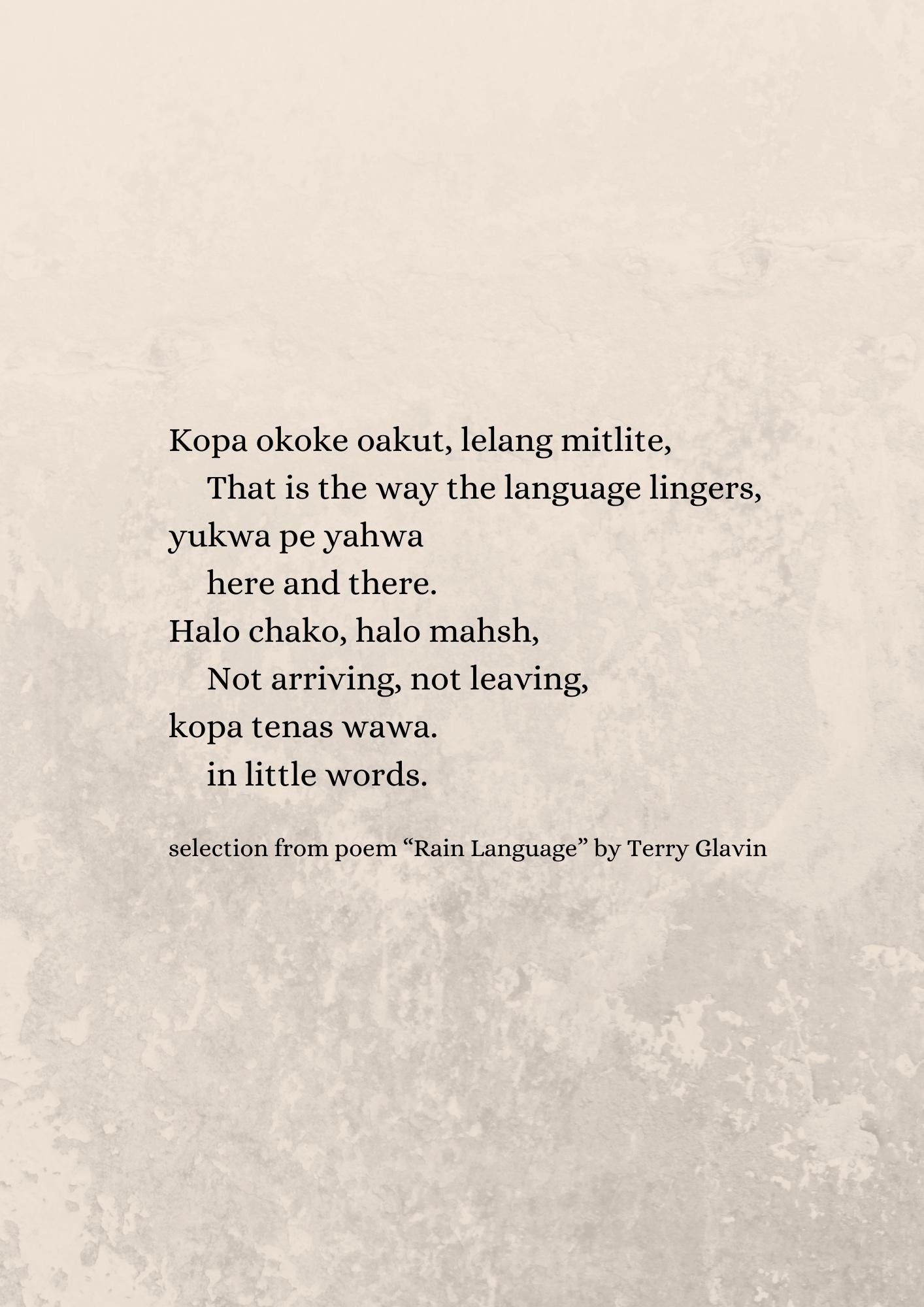Chinook Wawa
A trade pidgin language spreads across the West Coast
Date: 1820
For hundreds of years, a language united the Pacific Northwest. It was no one’s mother tongue. Instead, it was a language that formed between communities: a trade pidgin — a conglomeration of different Indigenous vocabularies like Chinook and Nuu-chah-nulth. In the 19th century, Chinook Jargon, or Chinook Wawa, proved to be indispensable for newly-arrived Europeans. It was how they connected with Indigenous trade partners up and down the West Coast. Because of its decentralized nature, the language was adaptable and soon acquired several new words from fur traders. As ensuing gold rushes ushered in more settlers, more European words would be adopted.
By the 1800s, new settlements had established themselves as trading hubs with networks extending from Alaska to California. Their economic activity made places like Astoria, Oregon, and Fort Vancouver along the Columbia River, in present-day Washington state, hubs of Chinook Jargon. In the 1830s, missionaries in these outposts began cultivating lists of the language’s words. By 1838, Chinook Jargon had its first dictionary, assembled by a Roman Catholic priest named Modeste Demers.
In total, there were around 500 words of varying origins. Nuu-chah-nulth, or Nootka, mingled with French; a Chinook word would quickly follow one in English. Forty words — from “hoh-hoh” (meaning to cough) to “tsish” (to sharpen) — were onomatopoeic, imitating sounds from nature. And yet, the jargon’s limited, motley vocabulary was perhaps its greatest strength. “Notwithstanding its apparent poverty in number of words, and the absence of grammatical forms,” American ethnologist George Gibbs wrote in his 1863 Chinook Jargon dictionary. “It possesses much more flexibility and power of expression than might be imagined and really serves almost every purpose of ordinary intercourse.”
It also made it an easy language to pick up. By 1875, approximately 100,000 people could speak Chinook Wawa. Anthropological linguist and jargon speaker Jay Powell estimates that at its height in 1900, as many as 250,000 people — Indigenous, Chinese, Japanese, European, and Hawaiian — spoke it, from Alaska to Oregon. The jargon was everywhere. For a time, it was more widely spoken than English. Chinook was so useful that those showing up in British Columbia would come prepared “with a winter jacket and a Chinook Wawa dictionary,” according to Powell. It was the language of bustling workplaces, from salmon canneries on the coast to the Hastings Mill in Vancouver, where Chinese, Japanese, and Indigenous employees worked alongside one another. In B.C.’s early days, Chinook Jargon’s omnipresence made it the de facto official language. Court cases, including the trial of the Tsilhqot’in chiefs during the Tsilhqot’in War, were often held in Wawa. In 1891, a Chinook Jargon newspaper named the Kamloops Wawa was established and could soon be found across the province.
The precipitous and organic growth of the language came to an end by the early 20th century. By then, an influx of British immigrants had arrived, and Indigenous children were in residential schools, cut off from their ancestral languages and Chinook Wawa. Government policy had successfully, and quite intentionally, created an anglophone hegemony. And yet, Chinook Jargon didn’t disappear. Even though few speak it now, it survives in the names of places and landmarks throughout the province.
Sources:
1. Battell Lowman, Emma. “Mamook Kom'tax Chinuk Pipa/Learning to Write Chinook Jargon: Indigenous Peoples and Literacy Strategies in the South Central Interior of British Columbia in the Late Nineteenth Century.” Historical Studies in Education, 2017, www.researchgate.net/publication/340181293_Mamook_Kom%27tax_Chinuk_Pipa_Learning_to_Write_Chinook_Jargon_Indigenous_Peoples_and_Literacy_Strategies_in_the_South_Central_Interior_of_British_Columbia_in_the_Late_19th_Century.
2. BC Chinook Wawa. Global Civic Policy Society, bcchinookwawa.ca/.
3. Blake, Lynn. Jean-Marie-Raphael Le Jeune. Dictionary of Canadian Biography, www.biographi.ca/en/bio/le_jeune_jean_marie_raphael_15E.html.
4. Lang, George. Making Wawa: the Genesis of Chinook Jargon. UBC Press, 2008.
5. Le Jeune, Jean-Marie Raphaël. Chinook and Shorthand Rudiments, with Which the Chinook Jargon and the Wawa Shorthand Can Be Mastered without a Teacher in a Few Hours. Kamloops Wawa, 1898, www.collectionscanada.gc.ca/eppp-archive/100/202/301/nlnews/nlnews-h/1999/nov99e/3111-21e.htm.
6. Pilling, James Constantine. Bibliography of the Wakashan Languages. G.P.O., 1894.
7. Powell, J.V., and Sam Sullivan. Chinook Wawa. The Canadian Encyclopedia, 6 Feb. 2006, www.thecanadianencyclopedia.ca/en/article/chinook-jargon.
8. Tsang, Henry. Kamloops Wawa. henrytsang.ca/kamloops-wawa/.






